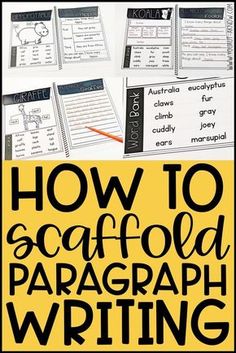In the journey of education, especially when it comes to developing writing skills, students sometimes find themselves at a crossroads, not knowing how to translate their thoughts into coherent and persuasive language. This is particularly true for opinion writing, a crucial element of academic curriculum that challenges students to articulate their thoughts on various topics assertively and persuasively. To bridge this gap, opinion writing scaffolds offer an effective methodology for educators to guide their students in expressing their viewpoints systematically.
Opinion writing scaffolds come in different forms, but three quick and effective methods stand out for their simplicity and impact. These are the OREO method, the Box Plan method, and the FRIES method.
The OREO Method
The first method is named after the popular cookie—the OREO. An acronym for Opinion, Reasons, Examples (or Evidence), and Opinion restated; this scaffold provides a straightforward template for structuring an opinion piece. Students start by clearly stating their opinion on a topic. They then list reasons to support their opinion and back up those reasons with examples or evidence. Lastly, they restate their opinion, reinforcing their initial stance.
The Box Plan
The Box Plan breaks down opinion writing into four simple parts: introduction, two body paragraphs (each containing a main idea), and conclusion. This plan visualizes each part as a separate box that students can fill with relevant content. The introduction box includes the thesis statement or the main opinion. Each body paragraph box contains a main idea with supporting details, while the conclusion box wraps up the argument by summarizing the main points and restating the thesis statement in light of the provided information.
The FRIES Method
A more detailed scaffold is the FRIES method—an acronym that stands for Facts (or evidence), Reasons, Incidents (examples or anecdotes), Explanation (of how incidents support your argument), and Significance (why the argument matters). This method encourages depth by prompting students to include multiple types of support for their opinions instead of relying on just one kind.
Through these scaffolds, students learn to create structured and convincing opinion essays. These methods act as training wheels for young writers as they learn to balance their creative expression with logical structure – eventually guiding them towards effectively communicating their opinions without any assistance.
Teachers have found these scaffolds not just helpful in guiding students through opinion pieces but also in terms of applicability across various subjects and topics. Adapting these methods helps cater to diverse learning styles while still teaching essential writing skills that are critical across all disciplines.
Integrating scaffolds into lesson plans enables educators to achieve several pedagogical objectives: it simplifies complex tasks into manageable components for students; it provides clear expectations for what constitutes a good opinion piece; and it assists students in developing critical thinking skills as they construct arguments.
In conclusion, opinion writing scaffolds are valuable tools in the educator’s toolkit. By leveraging these methods, teachers can effectively enhance student expression and foster independent thinkers capable of presenting well-reasoned arguments confidently – ultimately preparing them for the myriad of academic challenges that lie ahead.





